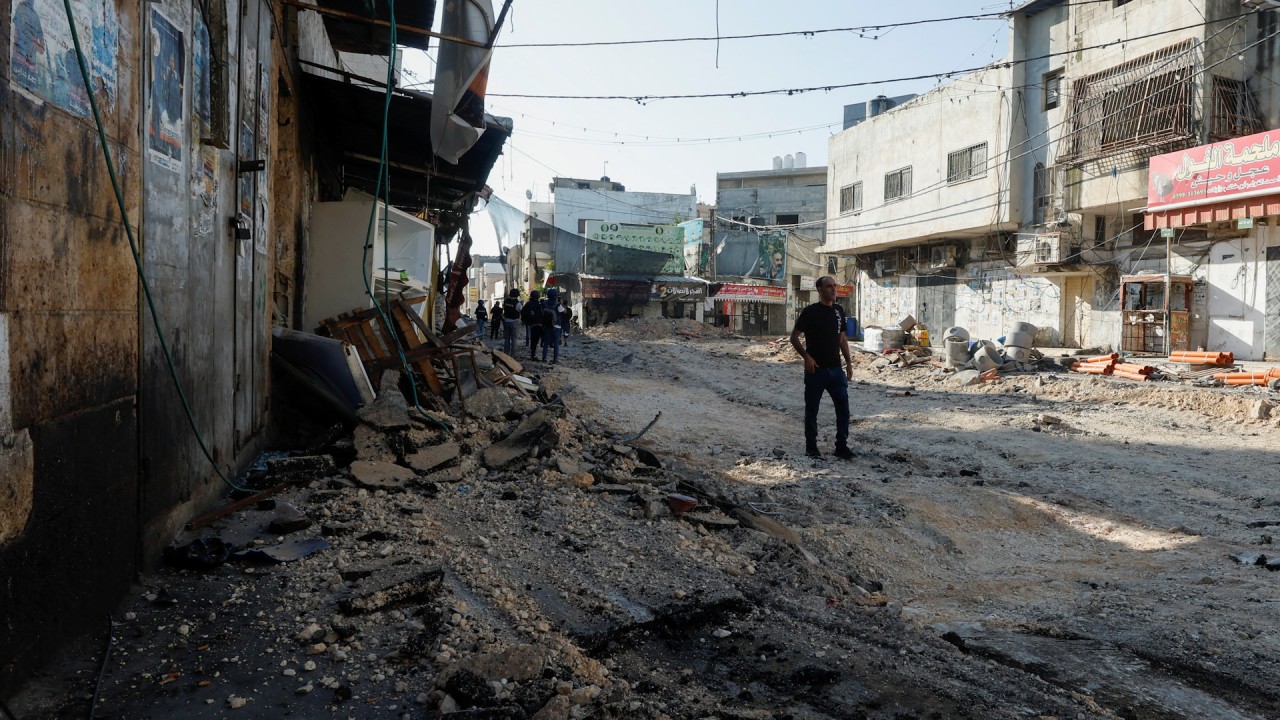
Israel-Gaza war: is a two-state, two-economy solution still possible?
- No independent Palestinian state or economy can arise amid Israeli settlements in the West Bank, the eco-demographic strangulation of East Jerusalem and destruction of Gaza
But, given the weak resource base, minuscule land area and expected challenges of absorbing Palestinian refugees and returnees, viability depended, to begin with, on Israel’s military withdrawal and evacuation, and the dismantlement of settlements. Without such a retreat by Israel, economic development could not be assured, because no investor would have confidence in Palestinian sovereignty.
The Fatah-Hamas (West Bank-Gaza) division since 2006 has created not only political disunity, but also greater economic distortions and a range of dependencies on the pre-eminent Israeli economy, which was experiencing a long boom.
For the past 20 years, Palestinian economists (including me) have devoted much time and energy to planning for a Palestinian “national economy” within the two-state configuration. Yet, in arguing that a coherent, independent, productive Palestinian economy could still be built even under occupation or siege, we implicitly abandoned the earlier PLO maxim that there can be no development without sovereignty.
Now, the economic legacy of Oslo is clear. Israel dominates – and can easily manipulate – the Palestinian macroeconomy. So it is no longer credible to argue that an independent Palestinian state could arise amid the archipelago of Israeli settlements in the West Bank, the eco-demographic strangulation of East Jerusalem, and now the destruction of Gaza.
Even the most starry-eyed economist would be humbled by the scale and complexity of the reconstruction effort this war has necessitated. Making matters worse, an indirect outcome is that the Palestinian economy in the West Bank, including East Jerusalem, is also collapsing.
Well before October 7, Palestinian economic development had become a chimera, especially with the rise of an Israeli government fully committed to the agenda of religious nationalists and messianic settlers. They have pushed the West Bank’s 3 million Palestinians to the brink since the war began, calling for their forceful subjugation or displacement.
As The Elders (an independent group of global leaders) argued in a recent open letter, the international community must move quickly if it hopes to turn today’s catastrophe into a last-gasp opportunity to achieve – or impose, if need be – a two-state outcome. Of course, many of the Israelis in power consider such an idea radioactive. But, since the extremism within the Israeli coalition cannot be ignored, it will need to be contained, especially by peace-loving Israelis and their US allies.
Why Hamas terrorists and Israeli hardliners are two sides of the same coin
Even at this dark hour, there may still be a chance to forge a “real” two-state deal, because we already know what it must include. The original PLO prerequisites for economic viability are as valid as they were 35 years ago, because they represent the only material basis for a viable and permanent political solution.
For decades, Palestinian economists and planners have been preparing the economic foundations of a sovereign state of Palestine. We have continued pursuing this goal despite seeing its prospects recede before our eyes. Having peered into the bottomless pit of this war, are there still enough Israelis and Palestinians with the courage and political foresight to opt for peace instead of more violence?



